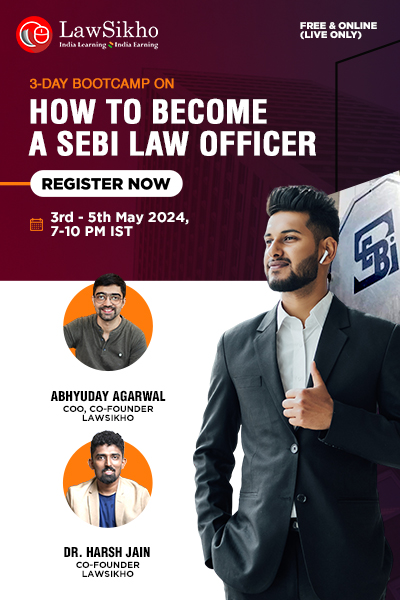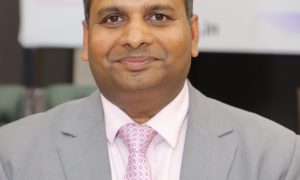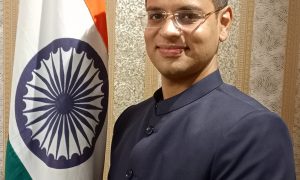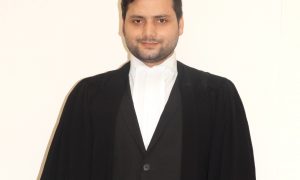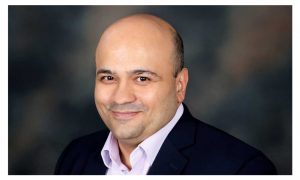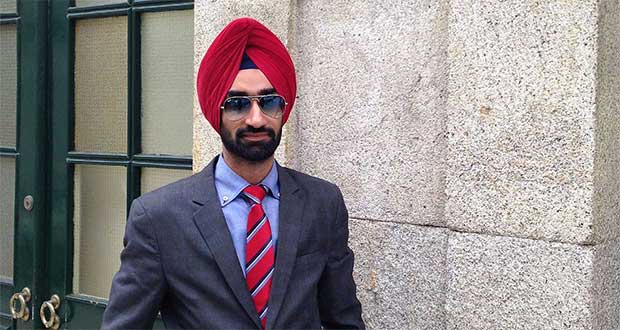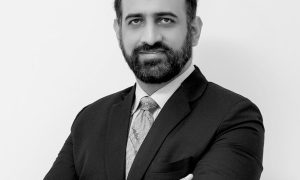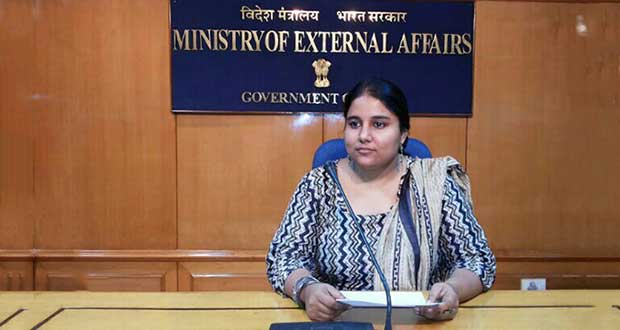This Interview has been published by Pragya Chandni and The SuperLawyer Team

Can you walk us through your journey into the field of law, particularly focusing on how you found your niche in brand protection and litigation counsel?
Law as a subject had never been on my mind until school. It was a passion for my mother who due to her corporate profile at a major multinational bank and regular interactions with seasoned professionals inspired me to take up law. So, I can easily say law wasn’t planned for me; however, it just happened to me. Having said that, now 11 years down the line, I feel it was a beautiful accident which helped me shape my life both personally and professionally for the better. Being born and brought up in Delhi, I embarked on my journey of law through Guru Gobind Singh Indraprastha University, Delhi.
My first professional assignment was with Kochhar and Co.; however, owing to my area of interest in IP rights right from college, I made a switch to Saikrishna & Associates, a very well known name in the field of IP laws. It was my stint at Saikrishna & Associates that helped me identify my passion towards brand protection and enforcement of IP rights and eventually into associated litigation. I would take this opportunity to thank my mentor, Mr. Bharatvir Singh (Partner at Saikrishna & Associates) who led me through this journey of brand protection and made me aware of this vast space where brand owners and their niche brands are always at risk due to rampant counterfeiting. His vast experience, expertise and leadership and constant encouragement into direct client dealing made this otherwise difficult ride a smooth one.
Thereafter I had a stint with Semita Legal, Advocates & Solicitors specializing in litigation and brand protection. It was during the tough COVID-19 times that the brand protection industry faced a tough challenge with ground movements and investigations being restricted. However, it was a great learning time as the industry re-invented with a major focus towards online counterfeiting. While strengthening the IP portfolio at Semita Legal, I was offered an interesting position with Flipkart to look after their litigation and regulatory issues. Hence, I moved to an in-house role to better equip myself with the corporate side of the legal challenges and to better appreciate the business angles and legal nuances.
With your extensive experience across various industries such as e-commerce, FMCG, media, and apparel, what common challenges have you observed regarding brand protection, and how do you approach addressing them?
Counterfeiting or sale of dubious quality products is a rampant issue being faced across all industries in general. The foremost sensitization should come to the brands that their goodwill which has been built over years of efforts and constant hustle is at major risk with brand dilution caused by counterfeiters by offering low quality products and ultimately putting the public at risk. Second major challenge is identifying and setting up a robust ground team and training them for identifying both offline and online counterfeits. The primary challenge kicks in when after successfully completing the two stages, the task of involving the law enforcement authorities comes into play. This involves strong liaising with enforcement authorities including Police, sensitising the authorities from time to time about the importance of copyrights and trademarks and the law which empowers them to undertake appropriate actions to curb this menace. We need to have regular interaction with authorities and keep them abreast about the latest developments and training in this space. The major fallout sensed by me when interacting with the authorities is that they feel once brands get their complaints registered, they don’t adequately support the further process of answering notices or attending Court dates. This to a large extent can be controlled by being vigilant to all requests related to complaints received from the authorities and providing them prompt support so that they are also not caught off guard before the Courts. Lastly, regular checks in the market and follow up actions on enforcements already conducted can help mitigate this evil to a large extent.
Given your background in handling regulatory matters, could you share some insights into navigating the complexities of compliance in industries with stringent regulations, such as food safety and legal metrology?
All industries today are bound by numerous applicable laws, rules and regulations and strict compliance is not only the need of hour from regulators perspective but also from a perspective of maintaining good business hygiene. Firstly, we need to set up separate teams to look after the food safety and legal metrology compliances. They need to regularly conduct training at the ground to ensure awareness about the compliance requirements. Having said this, regular checks on the already compiled parameters need to be maintained to ensure non-expiry or any additional requirements that are required to be met. Constant tabs on the daily regulatory updates need to be kept so that the same can be promptly synced in with the business activities to avoid any actions from regulatory authorities by way of combining actions etc.
Your role involves coordinating with law enforcement authorities and external stakeholders. How do you effectively manage these relationships to ensure swift action against counterfeit activities while maintaining a positive rapport?
A4. Strong coordination and regular liaising with law enforcement authorities can take you a long time in initiating swift actions against the counterfeit activities. The most effective way to handle this is to always be prompt and responsive to any support being sought from the authorities, whether understanding the law, conducting regular training, providing them prompt responses to notices which ultimately aids in timely filing of chargesheets. Once the authorities develop confidence that proper support has been provided, they equally support in nabbing down the counterfeiters. Basically, it’s two-way traffic and to foster a positive roadmap to curb this menace, we need to be transparent and responsive to each other’s requirements.
Could you elaborate on your strategies for identifying brand-specific threats and formulating proactive brand protection measures, especially in an increasingly digital landscape where counterfeiting is rampant?
This requires a multifaceted approach. Here are some strategies: 1. Monitoring and Surveillance – employment of advanced tools and services such as keyword monitoring etc to track online mentions on social media and e-commerce platforms 2. Collaboration with Online Marketplaces for reporting counterfeit listings and consequent takedowns 3. Legal Measures to actively monitor infringements and take legal action against counterfeiters to protect brand’s goodwill and market share 4. Consumer Awareness to identify genuine products and distinguish them from counterfeit ones; provision of information on official websites and packaging about authentication methods etc. 5. Supply Chain Transparency and Security– to prevent unauthorized access to products or intellectual property. Implementation of technologies such as blockchain to track and authenticate products from manufacturing to distribution 6. Dedicated Brand Protection Team to work with specialized professionals that have expertise in identifying and combating counterfeit activities 7. Engagement with Law Enforcement– to investigate and prosecute counterfeiters 8. Continuous Improvement and Adaptation– regularly review and update the brand protection strategies to stay ahead of emerging threats and technologies used by counterfeiters.
In your experience, what are some key considerations when devising litigation and brand protection strategies for corporate entities, and how do you ensure alignment with their overarching business objectives?
When devising litigation and brand protection strategies, several key considerations should be taken into account: 1. Intellectual Property Portfolio Assessment including trademarks, copyrights, patents, and trade secrets 2. Risk Assessment to evaluate the potential risks and vulnerabilities faced by the company, including threats from competitors, counterfeiters, and unauthorized use of intellectual property; assess the likelihood of litigation and the potential impact on the company’s reputation, market share, and financials 3. Proactive Monitoring and Enforcement to detect and address instances of infringement, counterfeiting, and unauthorized use of the company’s intellectual property 4. Litigation Strategy Development that aligns with the company’s business objectives and risk tolerance; Factors to be borne in mind include strength of the company’s intellectual property rights, the nature of the infringement, the potential costs and benefits of litigation, and the likelihood of success in court 5. Alternative Dispute Resolution such as mediation or arbitration, as cost-effective alternatives to litigation 6. Continuous Evaluation and Adjustment of brand protection and litigation strategies and make adjustments on a need basis depending on changing business conditions, legal developments, and emerging threats.
Can you share a memorable case or project where you successfully mitigated risks related to thefts, frauds, or process violations through timely legal intervention? What were the key factors contributing to its success?
There was a huge theft and shrinkage of materials at the warehouse of a large corporate house wherein prime suspects were internal and contractual workers. A thorough enquiry was conducted, and an FIR was registered. Thereafter with promptness of Police officers and liaising with the legal team, the Police filed a chargesheet before the Court. This enabled the Company to recover the losses through insurance in a time bound manner.
Drawing from your journey and expertise, what advice would you offer to fresh law graduates aspiring to specialize in brand protection and litigation counsel roles?
Fresh law graduates aspiring to specialize in brand protection and litigation counsel roles should foremost develop a strong foundation in IP Law and have a solid understanding of trademarks, copyrights, patents, trade secrets, and related areas of law. They should seek gaining as much practical experience as possible by way of internships, clerkships, or entry-level positions at law firms, corporate legal departments that specialize in intellectual property law or brand protection. Effective brand protection and litigation counsel needs strong research and writing skills to analyse complex legal issues, draft legal documents, and advocate on behalf of clients. Attend industry events, conferences, and networking opportunities to connect with practicing attorneys, legal professionals, and industry experts which helps to stay Informed about industry trends and developments. Most important in this field is to stay ethical and strictly professional in all enforcement related interactions. Integrity and ethical conduct are essential qualities for success in not only the legal profession but any field of work.
Get in touch with Akanksha Khanna-


